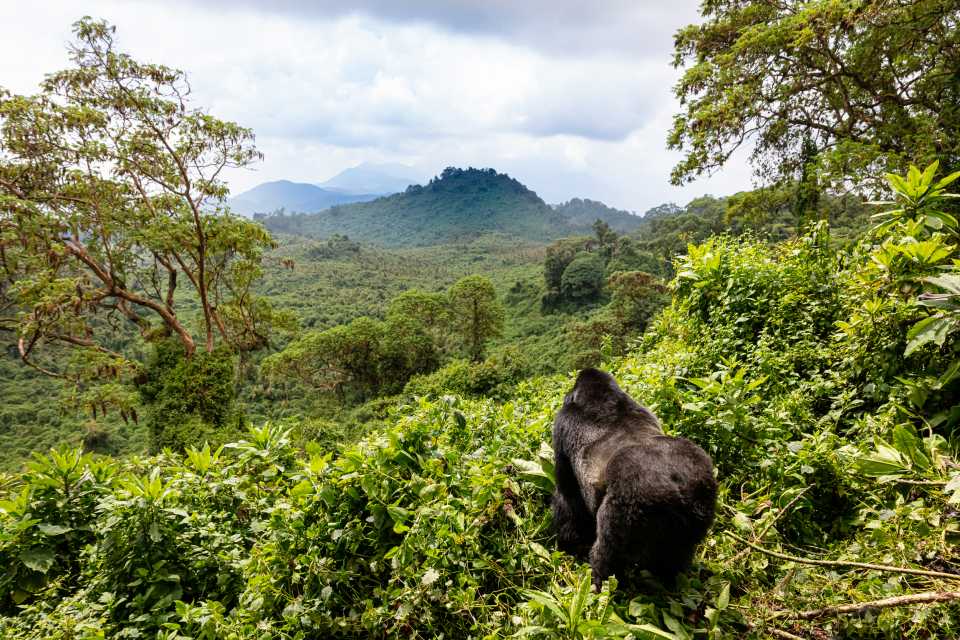Gorilla trekking is special because mountain gorillas look and behave like we humans. They live in families with a hierarchy where the dominant silverback dictates everything that is done by the group. Gorilla trekking is expensive because mountain gorillas are endangered and because of that many people want to see them. The high numbers of tourists interested in seeing them has forced many governments to raise the price of permits
Here are the steps you can follow:
Research Destinations: Identify the countries where gorilla trekking is allowed. Uganda and Rwanda are popular choices. Learn about the specific national parks or reserves where gorilla trekking is conducted, such as Bwindi Impenetrable National Park in Uganda or Volcanoes National Park in Rwanda.
Choose a Destination: Consider factors such as travel restrictions, permit availability, and your budget when choosing a specific destination. Compare the pros and cons of each location, such as the number of habituated gorilla groups, terrain difficulty, and additional activities available.
Obtain Gorilla Trekking Permits: Gorilla trekking permits are limited, so it’s crucial to secure them well in advance. Contact the relevant national park authority or use authorized tour operators to book your permits. Inquire about availability, costs, and any additional requirements.
Plan Your Itinerary: Develop a detailed itinerary that includes travel dates, gorilla trekking days, and any additional activities or sightseeing. Consider factors like acclimatization, as trekking may involve high altitudes.
Book Accommodations: Reserve accommodations near the gorilla trekking location to minimize travel time on trekking days. Consider the level of comfort and amenities, and check reviews to ensure a pleasant stay.
Arrange Transportation: Book flights to the nearest international airport and arrange transportation to your gorilla trekking destination. Consider using local transport services or hiring a reputable tour operator for seamless travel. Gorilla trekking often involves crossing borders between Uganda, Rwanda and Congo. If you are planning to do gorilla trekking in Congo, expect to cross the Goma border post at a cost ($100 for the VISA). Those who find the price of gorilla permits in Rwanda too high can choose to track the gorillas in Uganda instead but arrive through Kigali to avoid traveling for 8 hours from Entebbe or Uganda’s capital Kampala. Gorilla trekking from Uganda through Kigali involves paying a VISA fee of $50 at either the Katuna or Cyanika border crossings. The East African tourist visa can also be acquired at a cost of $100 for those who are combing safaris in different countries of East Africa.
Pack Appropriately: Pack comfortable, weather-appropriate clothing and sturdy footwear for trekking. Include essentials like insect repellent, sunscreen, a hat, and a small backpack for your trek.
Health Preparations: Check if any vaccinations or health precautions are required for the specific region you’re visiting. Consider purchasing travel insurance that covers medical emergencies.
Benefits Of Planning A Gorilla Safari
Planning a gorilla safari can offer a variety of benefits, making it a unique and rewarding experience. Here are some key advantages of planning a gorilla safari:
Rare Wildlife Encounter:
Gorilla safaris provide a rare opportunity to encounter endangered mountain gorillas in their natural habitat. Observing these majestic creatures up close is a once-in-a-lifetime experience.
Conservation Support:
Gorilla trekking permits contribute to conservation efforts and the protection of gorilla populations. The revenue generated from permits often goes toward habitat preservation, anti-poaching initiatives, and community development.
Cultural Immersion:
Many gorilla trekking destinations are located in areas with rich cultural diversity. Planning a safari allows you to immerse yourself in local cultures, interact with communities, and learn about their traditions.
Breathtaking Landscapes:
Gorilla habitats are often situated in lush and scenic landscapes. Planning a safari gives you the opportunity to explore beautiful forests, mountains, and other natural wonders that characterize the regions where gorillas reside.
Adventure and Physical Activity:
Gorilla trekking involves a moderate level of physical activity, adding an adventurous element to your trip. The trek through the forest to reach the gorilla groups can be challenging but immensely rewarding.
Educational Experience:
Gorilla safaris provide an educational experience about primate behavior, ecology, and conservation. Park rangers and guides share valuable insights during treks, enhancing your understanding of these incredible animals.
Supporting Local Communities:
Tourism revenue generated from gorilla safaris often benefits local communities by creating job opportunities and supporting community development projects. This positive impact helps foster a sense of shared responsibility for conservation.
Unique Photography Opportunities:
Gorilla safaris offer unique and memorable opportunities for wildlife photography. Capturing the beauty of gorillas in their natural environment and documenting their behaviours can create lasting memories.
Personal Growth and Adventure:
Planning and executing a gorilla safari can be a transformative experience. It challenges you physically and mentally, fostering personal growth and providing a sense of accomplishment.
Global Awareness:
By participating in gorilla trekking, you contribute to global awareness of the importance of wildlife conservation. Sharing your experiences with others can inspire a broader understanding of the need to protect endangered species and their habitats.
Memorable Connections:
Interacting with gorillas and sharing the experience with fellow travellers, guides, and local communities can lead to lasting memories and meaningful connections. It’s an opportunity to create bonds with people who share a passion for wildlife and conservation.
Conclusion
Overall, planning a gorilla safari is not just about the thrill of seeing gorillas but also about contributing to conservation, supporting local communities, and gaining a deeper appreciation for the natural world.

Leave a Reply